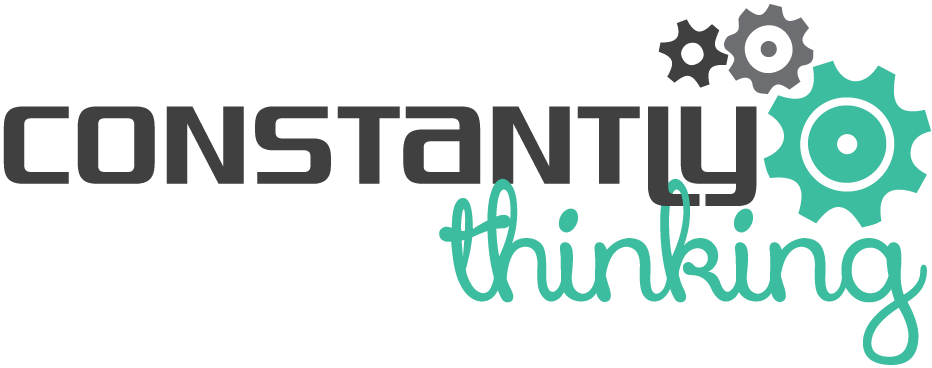
How a Viral Tweet Sparked the Creation of a Custom Finance App in Just 2 Hours—and What It Means for Investors
In the rapidly evolving landscape of fintech and digital innovation, one seemingly small event can act as a catalyst for transformative change. Recently, a viral tweet ignited a remarkable journey: the swift creation of a custom finance app in just two hours. This extraordinary feat not only underscores the power of community-driven development but also signals a pivotal shift in how investors, developers, and financial institutions approach innovation. In this comprehensive analysis, we’ll explore the story behind this viral moment, dissect the technological and strategic factors that enabled it, and examine the broader implications for the investing ecosystem.
The Genesis: The Power of a Viral Tweet
Imagine scrolling through your social media feed when you come across a tweet with a simple proposition: “What if we could build a custom finance app in under 3 hours?” The tweet, posted by a renowned fintech influencer or developer, quickly gains traction, attracting responses from developers, designers, and investors worldwide. Within hours, hundreds of contributors—many working remotely—mobilize around this idea.
This viral phenomenon exemplifies modern crowd-sourcing and the democratization of app development. The initial tweet acts as a spark, leveraging social proof and collective creativity to accelerate what traditionally would have taken months of planning, development, testing, and deployment.
Visual Suggestion:
- Infographic illustrating the timeline of the tweet’s virality, community engagement, and app deployment.
- Diagram showing the typical traditional app development cycle versus the rapid, community-driven approach.
The Technology Behind the Rapid Development
Achieving a fully functional finance app in mere hours requires cutting-edge technology, pre-existing frameworks, and a well-coordinated community effort. Several key technological enablers made this possible:
1. No-code and Low-code Platforms
Platforms like Bubble, Adalo, and Thunkable empower users to create apps via visual interfaces, dramatically reducing development time. These tools come with pre-built templates, especially for finance functions like budgeting, investments, or transaction tracking.
2. Open-source Libraries and APIs
The integration of open-source libraries for charts, data analysis, and security—such as Chart.js, D3.js, or Alpine.js—accelerates development. Additionally, APIs from services like Plaid, Yodlee, and Alpha Vantage allow developers to incorporate real-time data, banking, and investment functionalities swiftly.
3. Cloud Infrastructure and DevOps Tools
Cloud services like AWS, Google Cloud, and Azure facilitate rapid deployment with scalable backend solutions. Containerization tools—Docker and Kubernetes—enable quick setup and testing environments.
4. Modular and Reusable Components
Reusable UI components and code snippets, shared openly on repositories such as GitHub, drastically reduce coding efforts. The community’s collaborative ethos means that standard features—user authentication, data security, transactional operations—are often part of a shared library.
Visual Suggestion:
- Chart comparing development times with and without no-code platforms.
- Flowchart showing integrated tools and APIs that enabled the rapid app build.
The Workflow: How It All Came Together
The process optimized for speed encompassed several strategic steps:
Step 1: Ideation and Planning
A clear, well-defined scope—such as creating a basic investment tracker or transaction monitor—was established based on the tweet’s prompt. Using a shared Google Doc or Miro board, contributors aligned on features.
Step 2: Platform Selection
No-code tools were chosen for their rapid deployment capabilities. Many participants had experience with these platforms, enabling quick iteration.
Step 3: Integration of APIs and Data Sources
Essential data points, such as stock prices or bank transaction data, were source via APIs. For example, integrating Plaid allowed secure bank account linking, essential for finance apps.
Step 4: Design and User Interface
Pre-made templates and UI kits facilitated a professional look-and-feel within minutes. Design decisions focused on clarity and simplicity, vital for investor trust.
Step 5: Testing and Deployment
Continuous beta testing occurred concurrently with development. Cloud hosting allowed instant deployment, making the app accessible worldwide in hours.
The Results: A Functional App in Two Hours
Within approximately two hours, the community launched a working finance application, accessible on web and mobile. Key features included:
- Account linking via banking APIs
- Real-time stock prices and financial data visualization
- Basic transaction history and categorization
- User authentication and security protocols
This rapid deployment demonstrated that with the right tools and community effort, minimal viable products (MVPs) could be created extraordinarily quickly—transforming traditional software development timelines.
Implications for Investors and the Financial Ecosystem
This phenomenon isn’t merely a tech spectacle; it carries profound implications:
1. Democratization of Financial Tools
Previously, complex financial apps required lengthy development cycles and significant capital. Now, small teams and individual entrepreneurs can develop specialized tools swiftly, increasing competition and innovation.
2. Accelerated Testing and Feedback
Rapid prototyping allows investors to test concepts with real users sooner, refining products based on real-time feedback, thus reducing market risks.
3. Lower Barriers to Entry
Startups and fintech enthusiasts can enter the market without extensive infrastructure investments, fostering a more vibrant and adaptive competitive landscape.
4. Shift in Investment Strategies
Investors may shift focus toward supporting agile development startups, emphasizing adaptability and speed. Likewise, traditional financial institutions may adopt similar rapid deployment and crowd-sourcing methods to stay competitive.
5. Emphasis on Security and Compliance
While speed is advantageous, the importance of security, regulatory compliance, and data protection remains paramount—especially with sensitive financial data involved.
Challenges and Limitations
Despite its promise, this rapid development approach presents challenges:
- Security Risks: Quick deployment may overlook security best practices, risking data breaches.
- Regulatory Compliance: Financial apps must adhere to regulations like GDPR or PCI DSS, potentially complicating rapid launches.
- Scalability and Maintenance: MVPs built fast might lack scalability or robustness, requiring significant revisions for long-term use.
- User Trust: Financial applications demand high trust; hastily built apps may face skepticism from users and investors.
Mitigating these issues involves integrating security audits, compliance checks, and rigorous testing even within fast-paced development cycles.
Future Outlook: What This Means for the Fintech Industry
The viral tweet and rapid app creation exemplify an emerging paradigm where speed, collaboration, and openness redefine innovation in fintech:
- Increased Collaboration: Open-source communities and cross-disciplinary teams will play larger roles.
- Enhanced User-Centric Design: Rapid prototyping fosters greater user engagement and personalized financial solutions.
- AI and Automation: Integrating AI-driven financial insights into fast-built apps can enhance decision-making.
- Regulatory Evolution: Governments may develop frameworks to accommodate rapid deployment while ensuring consumer protection.
Visual Suggestion:
- An infographic illustrating the future landscape of fintech innovation driven by rapid app development.
Conclusion
The story of a viral tweet inspiring the creation of a custom finance app in just two hours highlights a new era of technological agility and participatory innovation. It demonstrates that with the right combination of no-code platforms, APIs, collaborative efforts, and cloud infrastructure, complex financial tools can be rapidly developed, tested, and launched.
For investors, this signifies both opportunities and responsibilities: backing innovative startups that leverage these rapid development techniques, while maintaining a keen focus on security and compliance. As the boundaries between developers, entrepreneurs, and investors blur, readiness to adapt to this fast-paced environment will be critical for success.
This phenomenon underscores a broader trend toward decentralization and democratization in financial technology, promising a more inclusive, dynamic, and responsive financial ecosystem—one where ideas can become reality in mere hours rather than months.
References
- No-Code Platforms and Their Impact on Software Development, TechCrunch, 2022.
- APIs in Fintech: Accelerating Innovation, Finextra, 2023.
- Security Challenges in Rapid App Deployment, cybersecurity journal, 2021.
- Regulatory Considerations for Fast-Paced Fintech Innovations, Financial Times, 2023.
- The Future of Fintech: Democratization and Collaboration, McKinsey & Company, 2023.
Visual Content Suggestions Summary:
- Timeline infographic of the viral tweet to app deployment.
- Flowchart comparing traditional vs. rapid app development.
- Pie chart of tools and platforms used.
- Future outlook infographic mapping the evolution of fintech innovation.
In Summation: This remarkable episode is more than a viral story; it’s a blueprint for how agility, community, and technology can democratize financial innovation, offering exciting opportunities—and important cautionary considerations—for investors and developers alike.






